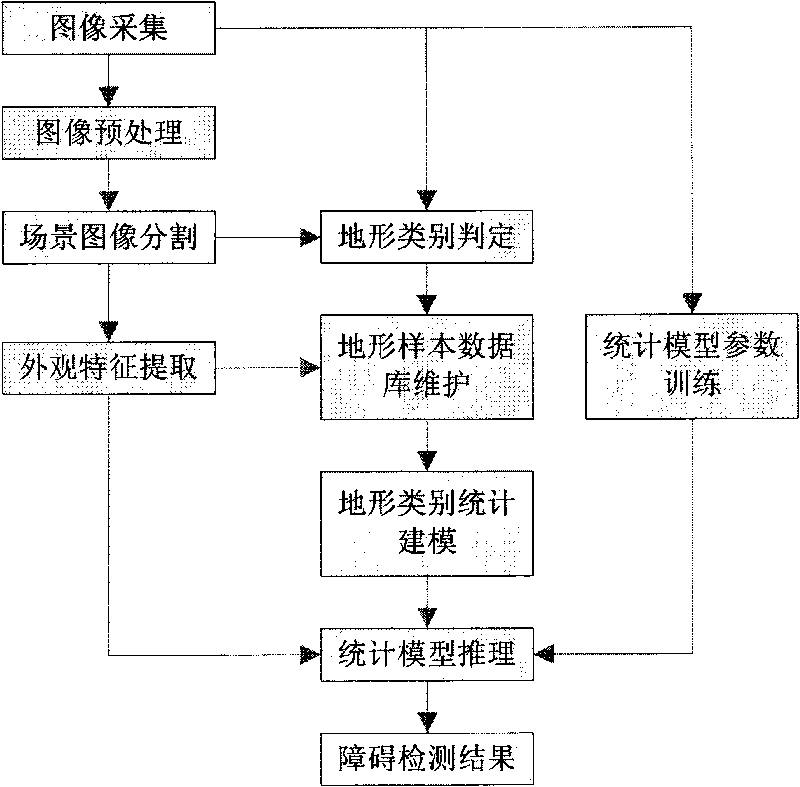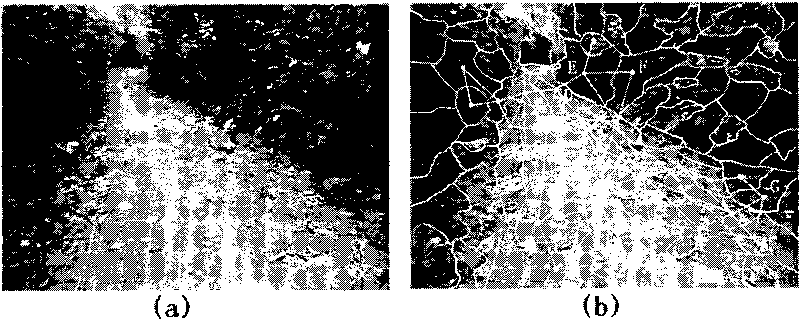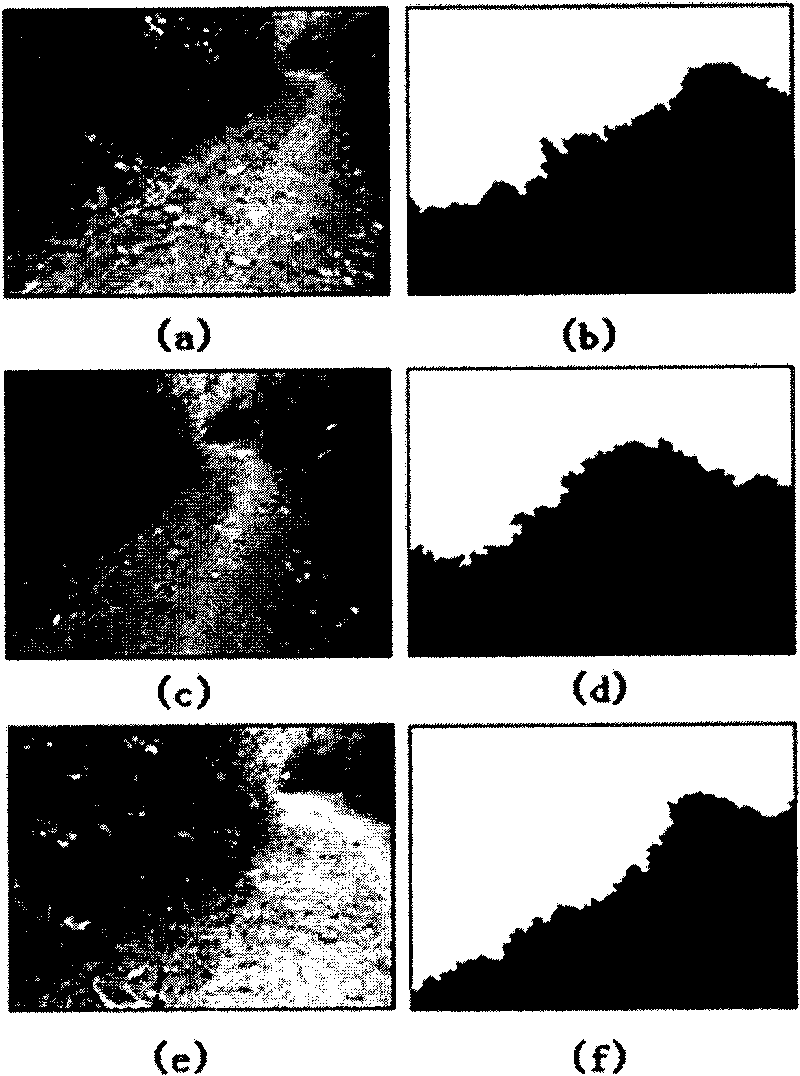Method for detecting long-distance barrier
A detection method, a long-distance technology, applied in the field of long-distance obstacle detection, can solve the problems that are difficult to achieve visual navigation of mobile robots, rely on appearance features and mapping relationship consistency assumptions, etc., to enhance online self-adaptive ability and eliminate category ambiguity , the effect of improving stability
- Summary
- Abstract
- Description
- Claims
- Application Information
AI Technical Summary
Problems solved by technology
Method used
Image
Examples
Embodiment Construction
[0038] The method of the present invention is further described below in conjunction with the accompanying drawings. This embodiment is implemented on the premise of the technical solution of the present invention, and detailed implementation methods and specific operating procedures are provided, but the protection scope of the present invention is not limited to the following Example.
[0039] Such as figure 1As shown, this embodiment includes: image acquisition, image preprocessing, scene image segmentation, appearance feature extraction, terrain category determination, terrain sample database maintenance, terrain category statistical modeling, statistical model parameter training and statistical model reasoning. Steps, and finally get the result of obstacle detection.
[0040] The following is a detailed description:
[0041] The first step is to collect a frame of image to memory.
[0042] The second step is to preprocess the collected image by downsampling and Gaussia...
PUM
 Login to View More
Login to View More Abstract
Description
Claims
Application Information
 Login to View More
Login to View More - R&D
- Intellectual Property
- Life Sciences
- Materials
- Tech Scout
- Unparalleled Data Quality
- Higher Quality Content
- 60% Fewer Hallucinations
Browse by: Latest US Patents, China's latest patents, Technical Efficacy Thesaurus, Application Domain, Technology Topic, Popular Technical Reports.
© 2025 PatSnap. All rights reserved.Legal|Privacy policy|Modern Slavery Act Transparency Statement|Sitemap|About US| Contact US: help@patsnap.com



